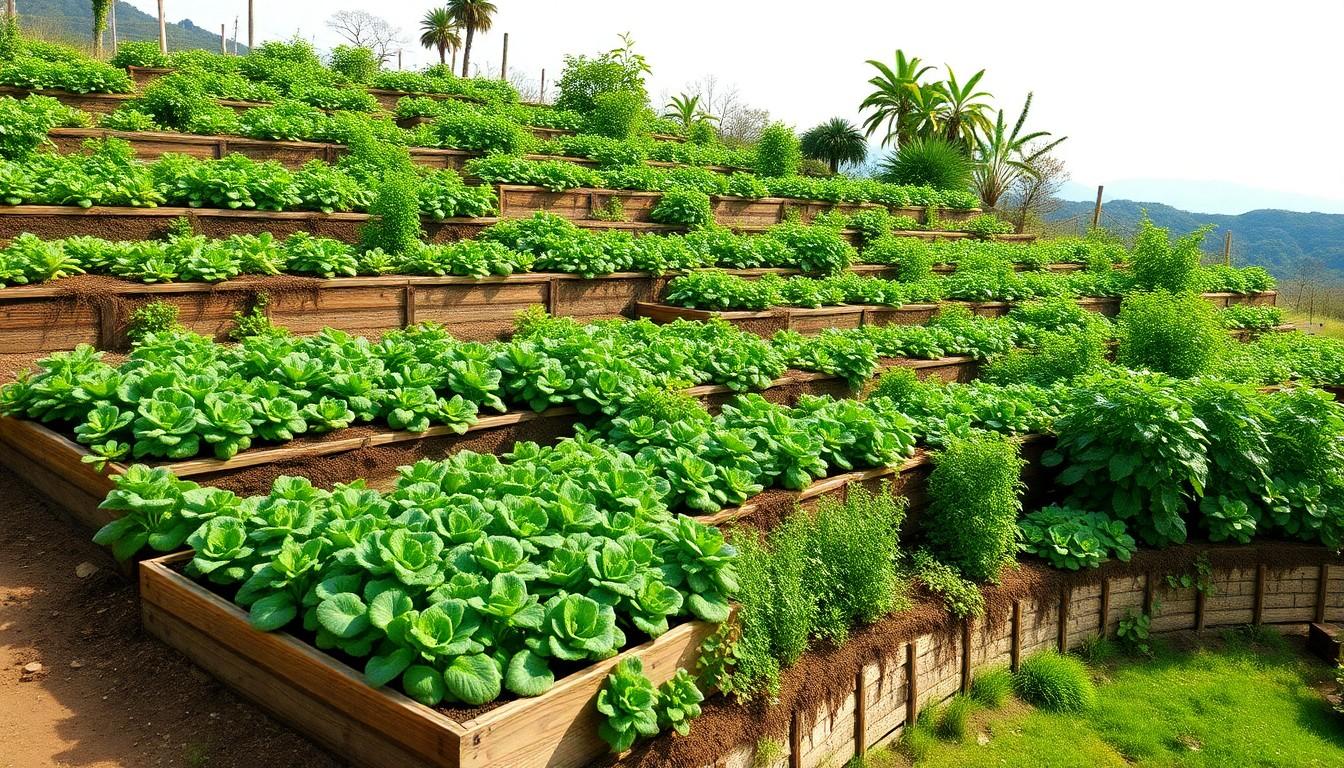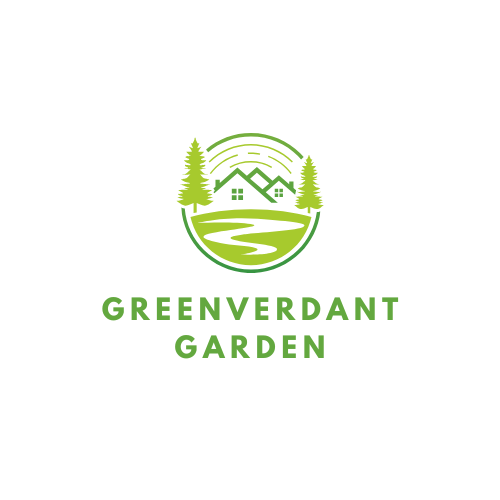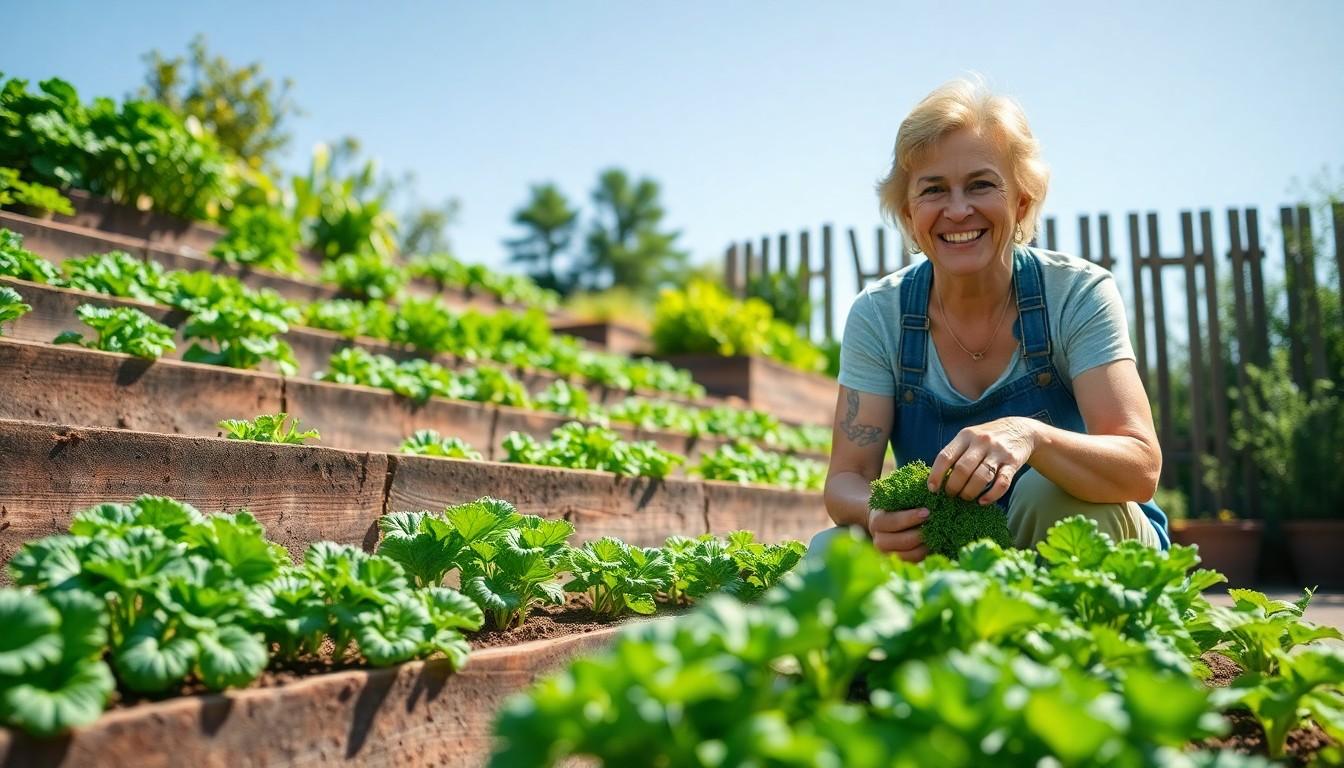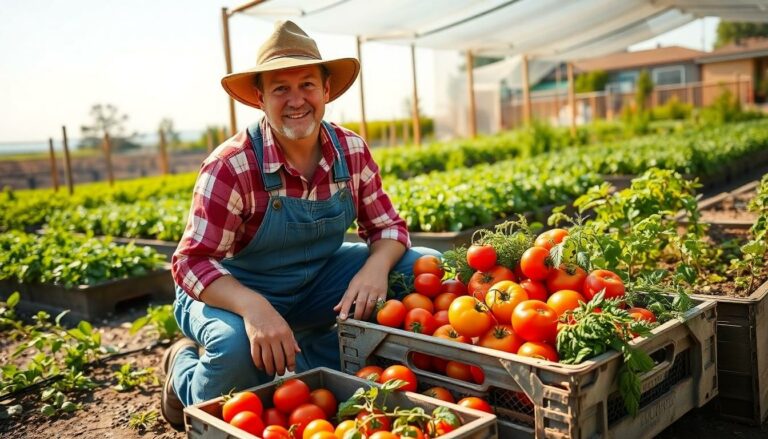Imagine stepping into your backyard and being greeted by a vibrant patchwork of vegetables cascading down the slopes like a green waterfall. A terraced vegetable garden isn’t just a feast for the eyes; it’s a clever solution for those with limited space or tricky terrains. By utilizing the natural contours of your yard, it transforms a mundane garden into a thriving oasis, where fresh produce flourishes while you sip your iced tea, feeling like a gardening guru.
Overview of Terraced Vegetable Gardens
Terraced vegetable gardens offer a unique solution for maximizing growing space. This technique involves creating stepped levels on sloped land, allowing efficient use of available area. Each level serves as a distinct planting bed, improving drainage and sunlight exposure. Vegetables thrive due to the better airflow and reduced erosion.
In addition to increased space, these gardens provide visual interest. The tiered design draws the eye, enhancing the overall landscaping of a property. Notably, terracing can turn an otherwise challenging terrain into a productive garden. Materials like wood, stone, or bricks can form walls that hold back soil, contributing to stability.
Water management improves significantly in terraced gardens. Rainfall collects in each level, reducing runoff and promoting deeper root systems. Efficient watering practices become easier, especially in drought-prone regions. Gardeners can implement drip irrigation systems tailored to the specific needs of each tier.
Plant selection plays a crucial role in the success of terraced gardens. Choosing vegetables suited for varying light conditions optimizes growth potential. Companion planting can also enhance nutrient uptake and deter pests.
Importantly, terraced vegetable gardens foster ecological benefits. They help in reducing soil erosion, maintaining biodiversity, and providing habitats for beneficial insects. Adding native plants increases resilience and supports local ecosystems.
Embracing terraced gardening transforms ordinary spaces into sustainable food sources. Gardeners reap the rewards of fresh produce while enjoying the aesthetic charm these gardens provide.
Benefits of Terraced Vegetable Gardens

Terraced vegetable gardens present numerous advantages for gardeners. They showcase effective use of space, promote soil health, and prevent erosion.
Space Optimization
Limited plots transform into productive vegetable beds through terrace gardening. Each tier provides a dedicated area for planting, maximizing available square footage. Elevated levels allow easy access for maintenance and harvesting. Different crops can thrive in varied light and moisture conditions, increasing yields. Compact plots benefit from vertical gardening techniques as well. Optimizing space leads to greater variety and abundance, even in small backyards.
Soil Conservation
Soil health improves significantly with terraced designs. These gardens retain nutrients by minimizing runoff, which enhances the growing medium’s quality. Tiers encourage organic matter accumulation, promoting a vibrant ecosystem for plants. Gardeners can incorporate mulch to further protect soil from erosion while reducing evaporation. Increased soil effectiveness translates into healthier vegetables, providing nutritious benefits to those who consume them.
Erosion Control
Erosion control becomes a natural benefit with terraced vegetable gardens in place. The stepped structure slows water flow, allowing moisture to soak into the soil instead of washing it away. Each terrace acts as a barrier, reducing the impact of heavy rains and decreasing the loss of valuable topsoil. Gardens nestled on slopes display improved stability, ensuring that plants remain rooted amidst shifting terrain. Enhanced soil retention not only protects crops but also contributes to sustainable gardening practices.
Key Design Considerations
Designing a terraced vegetable garden involves careful planning and execution. Significant aspects include layout, structure, and plant selection.
Layout and Structure
Maximizing usable space starts with an effective layout. Create tiers that accommodate various vegetable sizes while ensuring accessibility. Build retaining walls to support each level, preventing soil erosion and maintaining structure. A visual appeal also enhances the garden’s aesthetic, so consider integrating pathways for ease of movement. Strategic placement of beds improves sun exposure and drainage, fostering a healthy growing environment. Incorporating organic materials, such as stones or wood, adds to the natural beauty while providing stability and moisture retention.
Plant Selection
Choosing the right plants is essential for a thriving garden. Select vegetables suited for specific sunlight conditions each tier presents, ensuring healthy growth. Mixing companion plants enhances productivity and deters pests naturally. Integrate deep-rooted varieties on lower tiers to improve soil stability while utilizing shallow-rooted types on upper levels to maximize space. Prioritize seasonal crops to ensure harvest continuity and efficient use of resources. Focusing on native and drought-resistant plants can further minimize water needs, contributing to sustainability in gardening practices.
Maintenance Tips for Terraced Vegetable Gardens
Maintaining a terraced vegetable garden requires specific strategies for optimal growth and health. Using best practices enhances both productivity and sustainability.
Watering Techniques
Irrigation plays a vital role in terraced vegetable gardens. Employing drip irrigation systems efficiently delivers water directly to the plant roots. This method minimizes water waste and ensures consistent moisture levels. Additionally, understanding each tier’s drainage needs aids in preventing over-saturation or drought stress. Watering early in the morning reduces evaporation losses, while mulching around plants retains moisture and regulates soil temperature. Observing signs of wilting or discoloration helps gardeners adjust watering routines as needed.
Pest Management
Implementing effective pest management strategies safeguards terraced vegetable gardens. Utilizing companion planting helps create natural pest deterrents and promotes biodiversity. For instance, planting marigolds alongside vegetables repels unwanted insects. Regular monitoring of plants for signs of pests or disease ensures early intervention. Organic solutions, such as neem oil or insecticidal soap, effectively target harmful insects without disrupting beneficial ones. Maintaining clean garden beds and removing debris eliminates potential breeding grounds for pests. These practices foster a healthy environment for plants to thrive.
Conclusion
Terraced vegetable gardens offer a unique blend of beauty and functionality. They transform challenging landscapes into thriving green spaces while promoting sustainable gardening practices. By maximizing growing areas and improving soil health, these gardens not only yield abundant produce but also enhance the overall ecosystem.
With thoughtful planning and careful plant selection, gardeners can create vibrant layers of vegetables that flourish in harmony. The benefits extend beyond personal enjoyment; terraced gardens contribute to environmental conservation by reducing erosion and supporting biodiversity. Embracing this gardening method can lead to a rewarding and productive experience, ultimately fostering a deeper connection with nature.




